Five biodiversity success stories in the South Downs National Park
March 29, 2023
With its abundance of iconic birds, mammals, fish, plants, invertebrates and internationally-important habitats, the South Downs National Park is a haven for wildlife in the busiest part of the UK.
The fight to protect and enhance this beautiful sanctuary of flora and fauna is not without its challenges, not least the globally-recognised threats of climate change and human impacts.
But the designation of the South Downs National Park 13 years ago on March 31, 2010, marked a significant step forward.
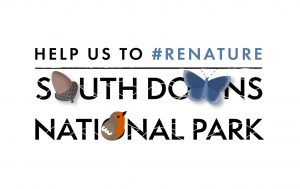 And, in the 13 years since, great strides have been made to help improve biodiversity. This vital work is ongoing but the green shoots of recovery are evident for a number of species.
And, in the 13 years since, great strides have been made to help improve biodiversity. This vital work is ongoing but the green shoots of recovery are evident for a number of species.
The National Park has committed to helping nature flourish through its ambitious ReNature initiative and is looking to create 13,000 hectares (that’s 21,000 football pitches!) of new wildlife habitat over the next decade.
We now look at 5 biodiversity success stories in the National Park:
Two iconic cricket species
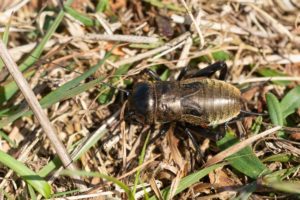 The South Downs remains the last bastion in the UK for the iconic Field Cricket, whose “cheep, cheep, cheep” is the quintessential sound of summer.
The South Downs remains the last bastion in the UK for the iconic Field Cricket, whose “cheep, cheep, cheep” is the quintessential sound of summer.
Thirty years ago the species was isolated to just one site of 100 field crickets in West Sussex. But a concerted effort, led by volunteers and conservation organisations, has helped to establish six colonies at heathland sites in Sussex, Surrey and Hampshire.
The wart-biter bush cricket is one of the UK’s most endangered insects and gets its name from the ancient Swedish medical practice of using them to eat skin warts. It was once found across southern England but numbers have declined so dramatically that they are now found only in five locations, three in the South Downs.
A pioneering project has seen the rare insect reintroduced into new chalk grassland habitat around the Deep Dean Water Treatment Works in East Sussex, thanks to a collaboration between South East Water, Natural England, Buglife, and the Zoological Society of London.
Farmland birds
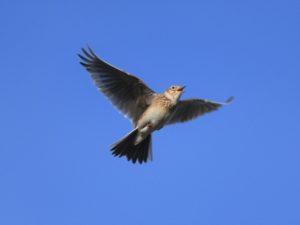 A wide range of birds can be found on farmland across the South Downs, including the grey partridge, lapwing, yellowhammer and skylark.
A wide range of birds can be found on farmland across the South Downs, including the grey partridge, lapwing, yellowhammer and skylark.
Farmland bird species have seen widespread decline across the UK over the past half century, but the South Downs Farmland Bird Initiative was launched to help reverse this decline.
A collaboration between the National Park Authority, Natural England, the Game and Wildlife Conservation Trust, the RSPB and farmers and landowners, the initiative has focused on introducing nature-friendly farming and restoring priority habitats, including wildflower-rich chalk grassland.
Nature doesn’t recognise farm boundaries so together farmers are supporting endangered species such as the grey partridge.
The project is ongoing and more monitoring studies will be required, but the anecdotal evidence from farmers is there has been an impact.
Farmer Ben Taylor, who manages the Iford Estate near Lewes, spoke of the amazing turnaround on his land, where the creation of new wildlife habitats has seen bird biodiversity flourish from just a handful of species to well over 100.
Ben said: “We’ve achieved profitable farming in the 21st century and it’s allowed us to also provide valuable new wildlife habitats. I really enjoy seeing how farming and conservation can sit neatly side by side. We can look after the environment and, at the same time, produce food for people.
“As you walk along the South Downs you can hear the birds singing. This is such an important migratory point for birds that are coming from the north of England or from further afield and crossing towards Europe. They come here because they have places where they can feed, places to rest and refuel. Ten years ago we didn’t have a great deal of birds, but we’ve now got 140 different species on the farm, and 35 are red-listed because they are so rare. It’s because of the environment they find that they are here.”
The Round-Headed Rampion and the Pyramidal Orchid
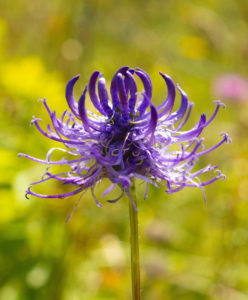 The Round-Headed Rampion, also known as the ‘Pride of Sussex’, can be found throughout the Sussex and Hampshire Downs. Scrub removal followed by sheep grazing has allowed this chalk grassland specialist to flourish. This has only been possible thanks to partnership working at sites like Old Winchester Hill, where the combined efforts of the SDNPA, Natural England and our Volunteer Ranger Service has really helped the recovery of this species.
The Round-Headed Rampion, also known as the ‘Pride of Sussex’, can be found throughout the Sussex and Hampshire Downs. Scrub removal followed by sheep grazing has allowed this chalk grassland specialist to flourish. This has only been possible thanks to partnership working at sites like Old Winchester Hill, where the combined efforts of the SDNPA, Natural England and our Volunteer Ranger Service has really helped the recovery of this species.
Meanwhile, The Pyramidal Orchid is another chalk grassland favourite in recovery. Scrub management by our volunteers, staff and contractors takes place during the winter months and has helped increase numbers of this beautiful flower.
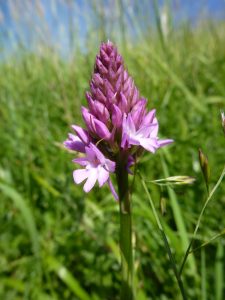
Duke of Burgundy butterfly
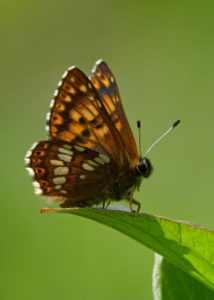
The nationally declining and threatened Duke of Burgundy butterfly responded spectacularly to habitat management work performed as part of the South Downs Way Ahead Nature Improvement Area (NIA), recovering from the brink of extinction and extending its territory. This involved the SDNPA, Wiston Estate, Steyning Downland Trust, and Butterfly Conservation.
In the ‘Chantry to Chanctonbury’ area of the NIA, annual counts rose from 82 to 408 between 2012 and 2014, an increase of 398 per cent.
Further west, at Heyshott Escarpment near Midhurst, peak daily counts rose from 31 in 2012 to 104 in 2014, an increase of 235 per cent.
Otters
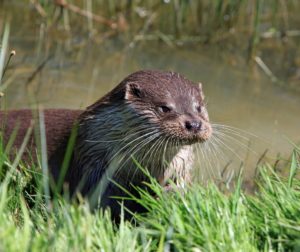 Thought to be locally extinct in Hampshire until a few years ago, otters have made a comeback on the River Meon.
Thought to be locally extinct in Hampshire until a few years ago, otters have made a comeback on the River Meon.
Populations appear to be bouncing back due to less river pollution. The Meon Valley Partnership, which includes the SDNPA and other partners such as the Environment Agency, Portsmouth Water and Hampshire and Isle of Wight Wildlife Trust, has worked with landowners, local fishing groups, and volunteers to help restore river banks and encourage more nature-friendly land management.
It’s believed there are now three breeding females on the River Meon and there are also confirmed sightings of otters on the River Rother.
